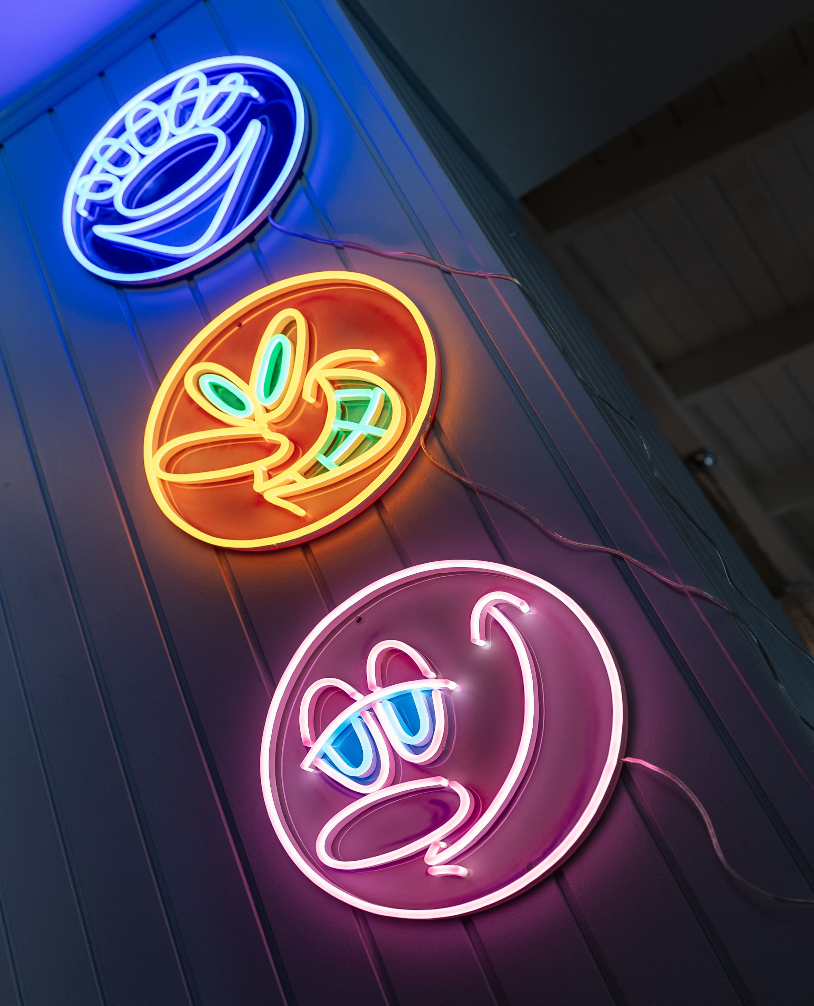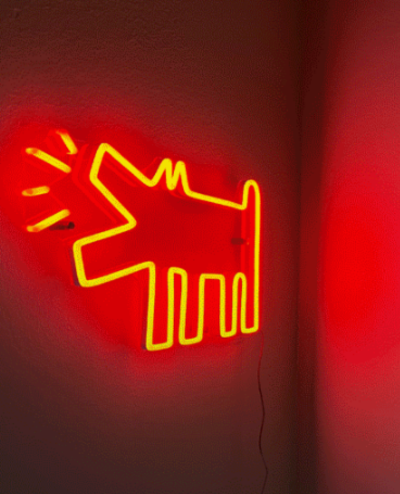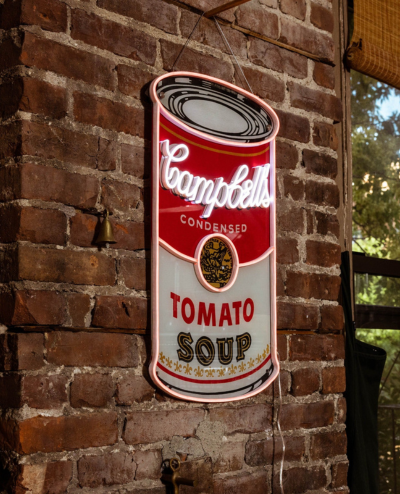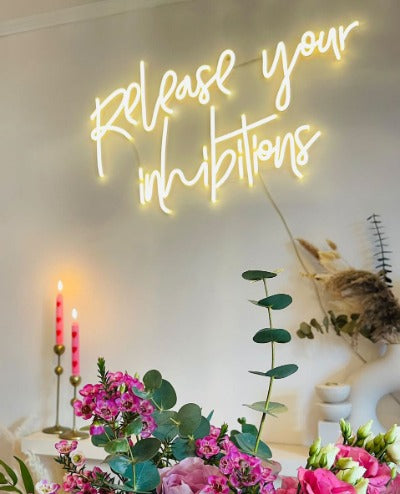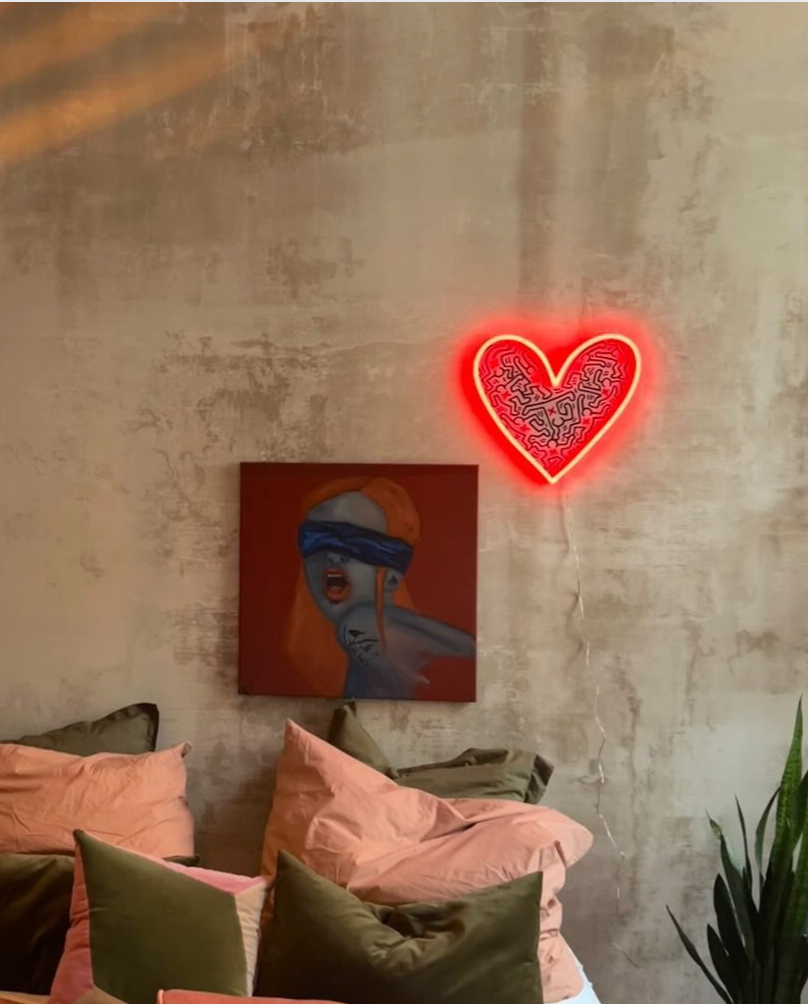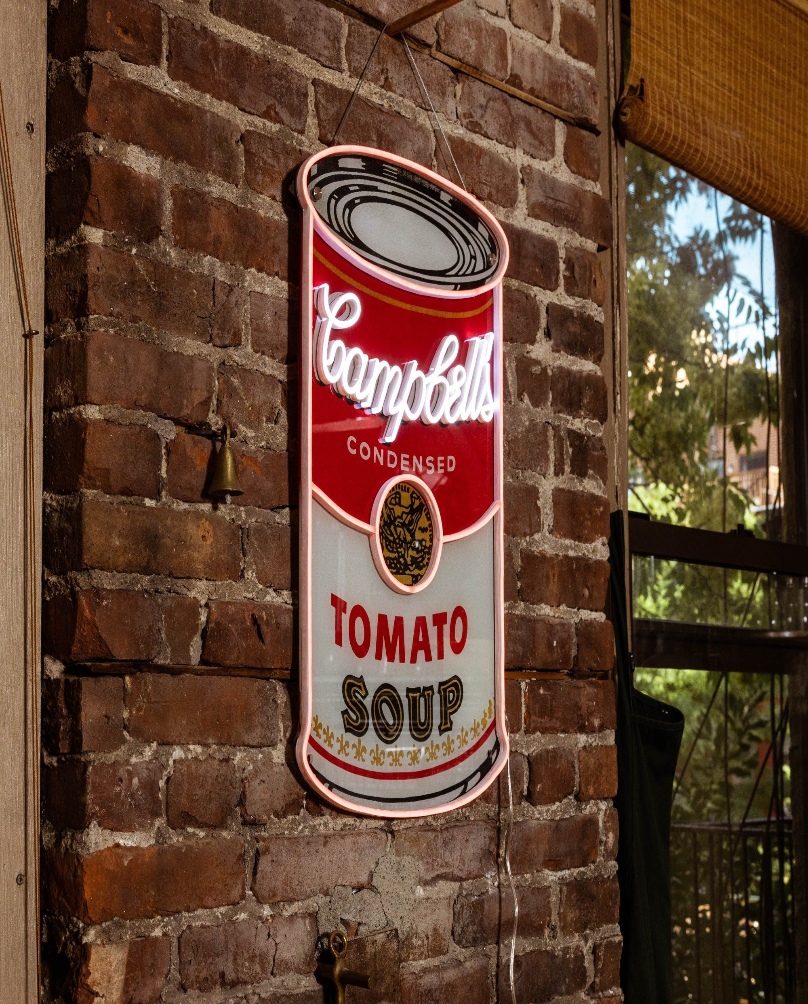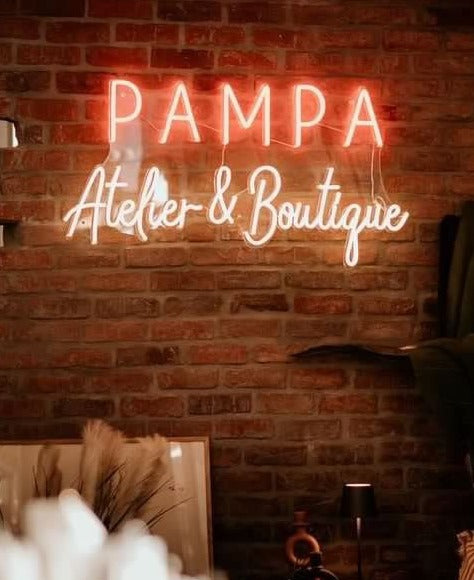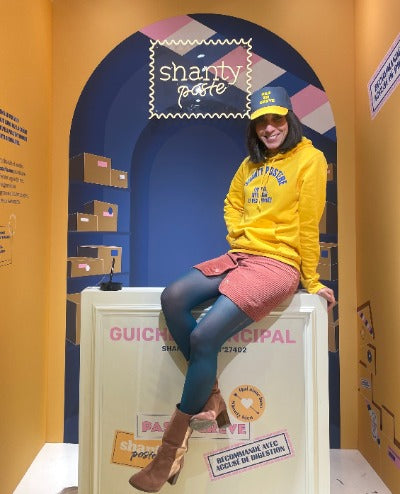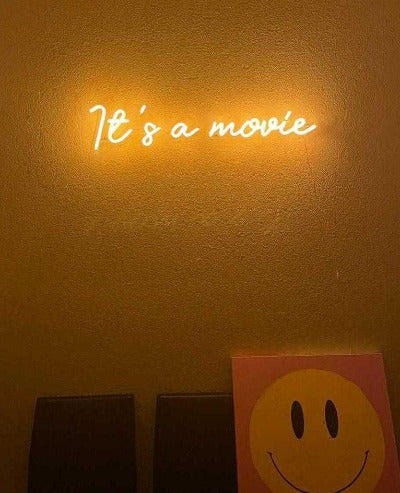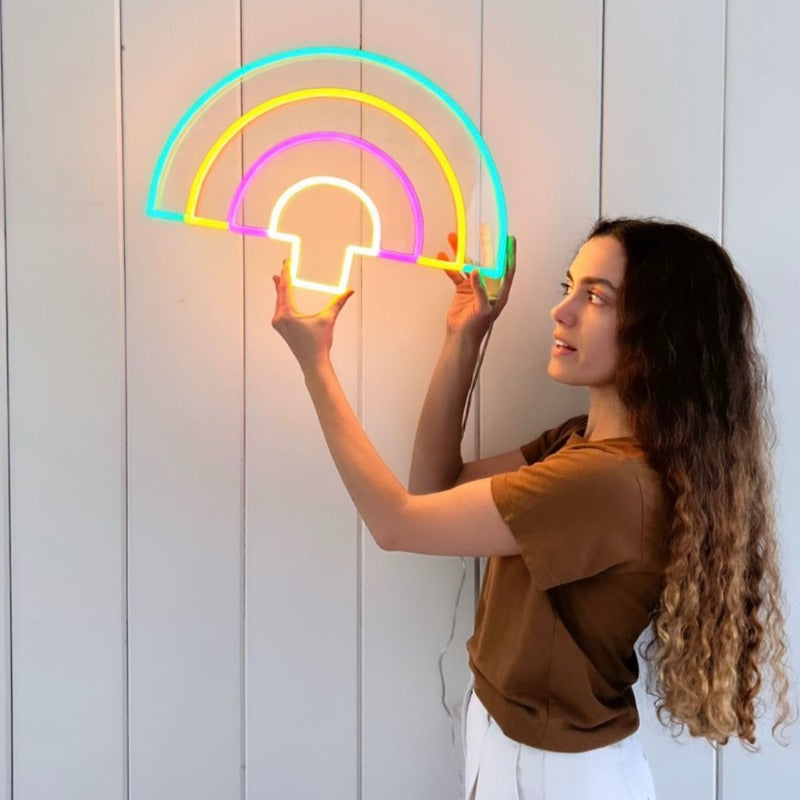
Andy Warhol, le père énigmatique du Pop Art, est encore plus intéressant que son œuvre. De ses origines ouvrières à Pittsburgh à ses fêtes d'artistes excentriques à New York, nous avons voulu créer une vidéo de collection qui reflète sa vie et son époque, en vous présentant l'homme qui se cache derrière les œuvres d'art emblématiques qui vivent désormais dans des néons LED !
Explorez le monde artistique d'Andy avec l'article ci-dessous, puis regardez notre vidéo de collection et voyez combien de références vous pouvez repérer !
Scène Une : Scene Une : Scene Une
Entrez -- entrez -- entrez dans le monde merveilleux de la répétition d'Andy. Tout d'abord, dans sa série des Campbell's Soup Can, 32 peintures ont été conçues pour donner l'impression d'avoir été réalisées par une machine plutôt que par un homme. Cela deviendra un thème central de l'œuvre d'Andy.
La répétition est liée à son intérêt pour la culture de production de masse de l'Amérique des années 1960. Il l'a reflétée autant par ses "portraits" de produits de tous les jours que par la répétition de ces portraits, avec parfois des changements subtils ou des expériences avec la couleur. La répétition a également été utilisée pour supprimer le sens de l'individualité de ses portraits de célébrités, révélant ainsi la qualité "produite en série" de la célébrité.
La répétition apparaît également dans sa vie personnelle. Selon Andy, il a mangé le même déjeuner tous les jours pendant 20 ans !
Scène Deux : À travers l'objectif d'Andy
La base du travail et de la vie d'Andy était l'appareil photo polaroid. Il a basé toutes ses œuvres sur des photographies prises par lui-même ou trouvées dans des journaux et des magazines. Même lors de son premier vernissage solo à New York en 1962, Andy se promenait dans la fête, prenant des photos avec son appareil Minox.
Les portraits de célébrités d'Andy, d'Elizabeth Taylor à Liza Minelli, ont commencé par des dizaines de polaroïds. Il les utilisait pour créer les sérigraphies qu'il peignait, ce qui donnait des portraits de style publicitaire. Mais ce n'était pas seulement sa façon de créer de l'art. C'était sa façon de se connecter avec le monde.
Le travail cinématographique avant-gardiste d'Andy est un autre exemple de son observation de la société. L'un des premiers films qu'il a réalisés dans le studio de la Factory à New York s'intitule Kiss (1963) et présente différents couples s'embrassant par tranches exactes de 3 ½ minutes chacune.
Scène Trois : Les origines du Pop Art
Andy Warhol arrive à New York après avoir étudié à l'université Carnegie Mellon de Pittsburgh et devient rapidement un artiste commercial très demandé. Il a attiré l'attention des grandes marques avec son style d'illustration inhabituel, notamment ses images de chaussures, peu communes dans les années 50. Parmi les marques qui ont utilisé ses premières œuvres, citons Glamour Magazine, Vogue, Tiffany & Co et RCA Records.
Les antécédents d'Andy dans la publicité ont servi de base à ce qui allait devenir le Pop Art. Son œuvre présente des "portraits" d'articles que l'on trouve dans un supermarché et des collages d'images de marques, utilisant des techniques auparavant limitées au monde de la publicité. Il était fasciné par la culture de consommation de l'Amérique des années 1960 et par la façon dont elle unissait des personnes de milieux différents, utilisant cette imagerie familière pour créer un langage commun.
Le pouvoir démocratique de la culture populaire était un aspect essentiel du défi lancé par Andy au monde de l'art. Pour Andy, les produits commerciaux étaient autant d'œuvres d'art que les tableaux accrochés au Met. C'était sa manière de changer la façon dont les gens voyaient et expérimentaient le monde dans lequel ils vivaient.
Scène Quatre : Nature & Mode
"La terre est vraiment le meilleur art." Si Andy est connu comme un artiste new-yorkais, l'importance qu'il accorde à la nature révèle l'importance de l'environnement dans sa vie et son travail. Il a acheté une maison en 1971 sur la pointe la plus éloignée de Long Island, à Montauk. Quelques années plus tard, il a acheté un terrain de 40 hectares à Aspen. Bien qu'il ait voulu y construire quelque chose, il a décidé de ne pas le faire, déclarant que le terrain était "trop beau".
Les œuvres florales d'Andy révèlent également ses racines dans la scène de la mode des années 1960. Si l'expression "Flower Power" est utilisée pour décrire un acte de résistance pacifique, elle peut également servir à décrire l'explosion des imprimés floraux et des motifs psychédéliques dans les années 60 et 70. Andy était très impliqué dans le milieu de la mode, assistant aux fêtes et aux défilés, et participant même à quelques-uns d'entre eux !
Scène Cinq : Réinventer le Process
Utilisé à l'origine et exclusivement dans l'art commercial, Andy a utilisé le processus de sérigraphie pour créer des pièces qui célébraient et critiquaient la culture de production de masse de l'époque.
Andy travaillait avec son assistant pour transférer les photos, souvent prises par son appareil, sur un écran de soie à mailles. La toile était placée en dessous et lorsqu'il passait une raclette chargée d'encre sur les mailles, l'encre passait à travers, imprimant l'image sur la toile.
Cela a permis à Andy d'accomplir plusieurs choses. Tout d'abord, il pouvait facilement créer des copies exactes d'une seule œuvre d'art, comme si les pièces avaient été réalisées par une machine et non par un homme. Ensuite, il a pu expérimenter avec la couleur, créant des perspectives variées sur une seule image. Ce procédé a amené le monde de l'art à s'interroger sur la validité des œuvres de Warhol en tant que "beaux-arts", mais il a depuis été accepté comme une autre méthode de création artistique.
Scène Six : La Bohème !
Andy est aussi connu pour sa vie sociale excentrique que pour son style Pop-Art. Il fréquentait la boîte de nuit Studio 54 à New York, un lieu de prédilection pour les célébrités, les artistes et les mondains. Le Studio 54, le plus légendaire des clubs new-yorkais, a su capter l'esprit de liberté des années 1970. Nombre des personnes qu'Andy a rencontrées au Studio 54 ont ensuite posé pour ses portraits emblématiques.
Andy organisait des fêtes d'artistes, souvent organisées dans les premières années à la Factory. Des célébrités telles que les Rolling Stones, Truman Capote, Salvador Dali, etc. assistent à ces événements.
En dehors du monde de l'art, Andy a touché à tout, du cinéma au mannequinat et même à la musique. Son œuvre emblématique, Banana, a été créée pour aider un groupe en plein essor, The Velvet Underground.
"Chaque chanson a un souvenir", explique Andy, "chaque chanson a la capacité de faire ou de briser votre cœur, de fermer le cœur et d'ouvrir les yeux".
Il a vécu au cœur même du monde de l'art new-yorkais, influençant et étant influencé par ses personnages, ses mouvements, ses rêves.
LA COLLECTION ANDY WARHOL X YELLOWPOP EN ÉDITION LIMITÉE EST À PRÉSENT DISPONIBLE À L'ACHAT ICI.
